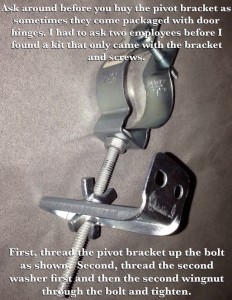
I mentioned in my beginners guide to stargazing, an equatorial mount allows the telescope to follow a particular object with the Earth’s rotation. Upper celestial sphere with example of the altitude and azimuth coordinate system Telescope mounts for astronomy are generally either alt- azimuth or equatorial.Īn alt-azimuth provides motion of up and down and left to right for the instrument’s altitude and azimuth, respectively. Although it’s a simple type of alt-azimuth tripod, looking skyward using a camera style head, can be tricky. Using a telescope on a camera tripod requires you to continually move the telescope along two axes, up-down and left-right, to keep up with the object you’re viewing. Users adopting this set-up say there’s minimal need for upping the friction and the scope balances well enough without slippage. In this way, you mount the scope on the head plate that’s placed to the side (works with a 3-axis tilt pan head). One fix for mounting a telescope on a camera tripod is to use it sidesaddle. Solutions for mounting a telescope on a camera tripod You’ll need a counterweight solution if using a standard camera tripod with head. Tracking is another problem, difficult because you’ll need to increase the friction to counter the backward slipping of the scope. You want a sturdy platform so you don’t have the ‘wobbles’ upsetting your view. You’ll have problems of poor stability and interference with magnification affecting clear views. With the scope mounted on top of the head as you would a camera, when you try to look upwards, the scope will fall back with increasing momentum. In other words, a telescope looks upwards to sky objects. The use of this set up can be awkward when pointing at the zenith. The problems with using a camera tripod with a telescope It has 2 axes so that you can move your instrument up and down and from side to side, which is a simple alt-azimuth found in telescope mounts for sky observations. The video head is easy to use, conveniently has a longer handle, and provides smoother movement. You’ll find more information about these different tripod heads, here. The ball head type now come with quick release plate. Three other types of common tripod heads for photography are the photo head, ball head (pistol head is a variation), and gimbal head. With this you adjust the device on one axis at a time. The traditional head is a 3-way, pan and tilt. The tripod head serves to securely attach your instrument so that the device can be moved, while on the tripod, to frame the view you wish to capture without vibration. The movement and positioning of the telescope for astronomical use may place a lot of strain on the camera tripod.Īs well, if you are going to use a telescope to observe planets, normally you’d want one with a mount compatible with tracking overhead sky objects. Smartphone in width between 45mm to 65mm (1.88" to 2.71") is available for the smartphone adapter.Most camera tripods on the consumer market aren’t built to support a good-sized telescope.

The Cameras that can be connected to Universal Camera Adapter IIġ.The 1/4”-20 screw hole(Size: W1/4 in.) must be at the bottom of the camera.2.The maximum loading weight is about 800g.

31.7-mm LV Eyepieces, PL12, 17, 20, 25, 32, 40-mm Eyepieces ※Cannot be used for NLV, NPL, LVW, NLVW series.

Fits eyepieces from 28mm diameter to 45mm diameter.


 0 kommentar(er)
0 kommentar(er)
